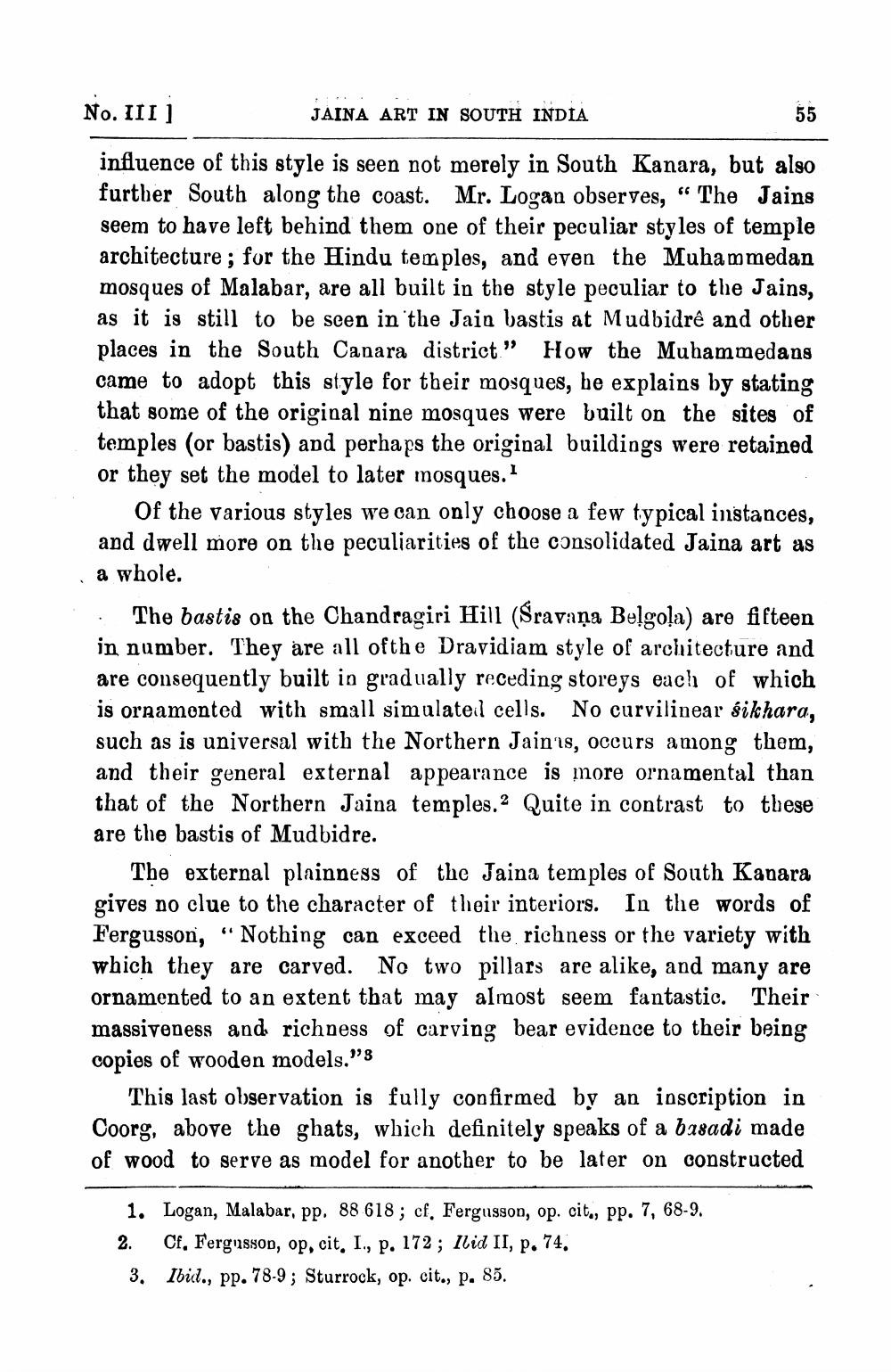________________
No. III]
influence of this style is seen not merely in South Kanara, but also further South along the coast. Mr. Logan observes, "The Jains seem to have left behind them one of their peculiar styles of temple architecture; for the Hindu temples, and even the Muhammedan mosques of Malabar, are all built in the style peculiar to the Jains, as it is still to be seen in the Jain bastis at Mudbidrê and other places in the South Canara district" How the Muhammedans came to adopt this style for their mosques, he explains by stating that some of the original nine mosques were built on the sites of temples (or bastis) and perhaps the original buildings were retained or they set the model to later mosques.1
JAINA ART IN SOUTH INDIA
55
Of the various styles we can only choose a few typical instances, and dwell more on the peculiarities of the consolidated Jaina art as a whole.
The bastis on the Chandragiri Hill (Sravana Belgola) are fifteen in number. They are all ofthe Dravidiam style of architecture and are consequently built in gradually receding storeys each of which is ornamented with small simulated cells. No curvilinear sikhara, such as is universal with the Northern Jainas, occurs among them, and their general external appearance is more ornamental than that of the Northern Jaina temples. 2 Quite in contrast to these are the bastis of Mudbidre.
The external plainness of the Jaina temples of South Kanara gives no clue to the character of their interiors. In the words of Fergusson, "Nothing can exceed the richness or the variety with which they are carved. No two pillars are alike, and many are ornamented to an extent that may almost seem fantastic. Their massiveness and richness of carving bear evidence to their being copies of wooden models."s
This last observation is fully confirmed by an inscription in Coorg, above the ghats, which definitely speaks of a basadi made of wood to serve as model for another to be later on constructed
1. Logan, Malabar, pp. 88 618; cf. Fergusson, op. cit., pp. 7, 68-9.
2.
Cf. Fergusson, op, cit. I., p. 172; Ilid II, p. 74.
3. Ibid., pp. 78-9; Sturrock, op. cit., p. 85.




